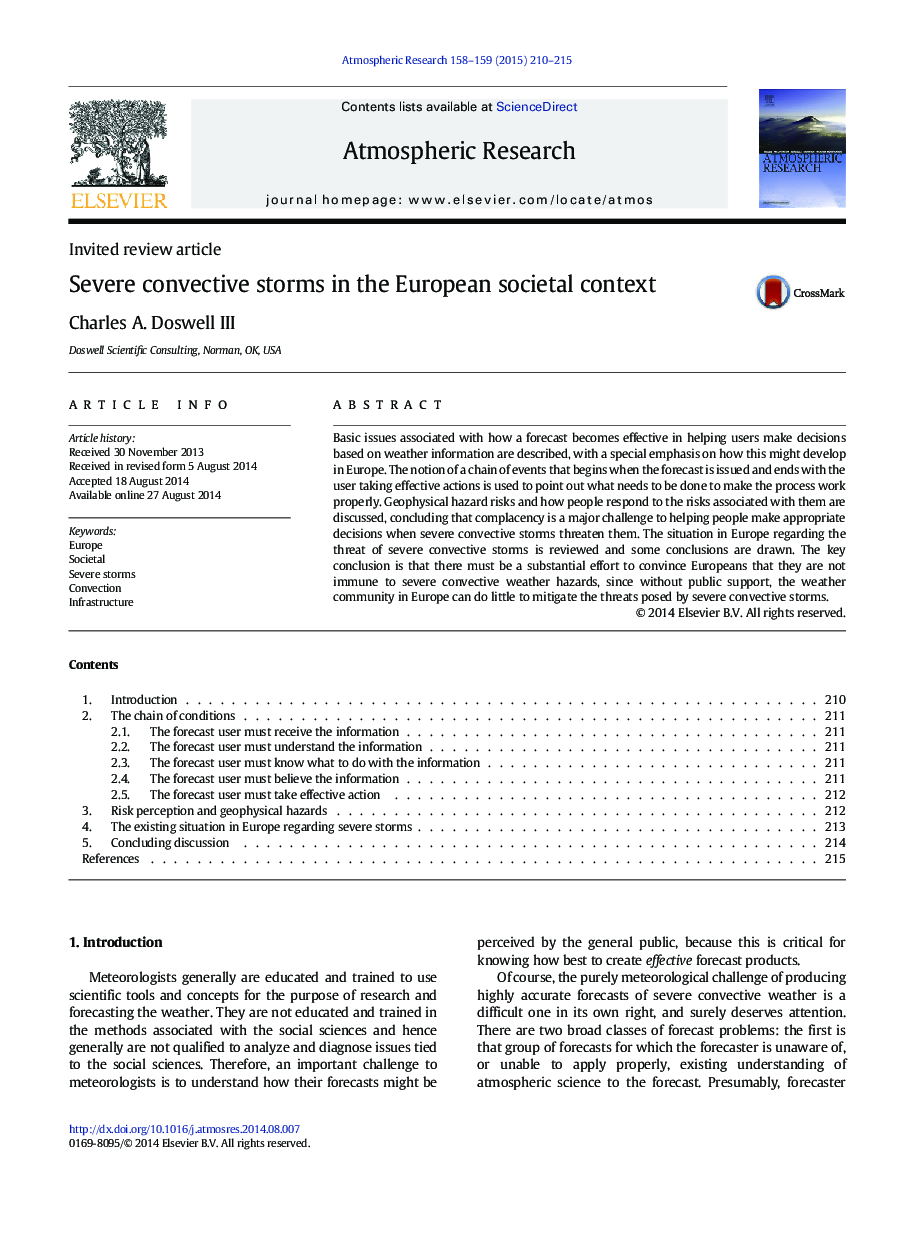| Article ID | Journal | Published Year | Pages | File Type |
|---|---|---|---|---|
| 6343310 | Atmospheric Research | 2015 | 6 Pages |
Abstract
Basic issues associated with how a forecast becomes effective in helping users make decisions based on weather information are described, with a special emphasis on how this might develop in Europe. The notion of a chain of events that begins when the forecast is issued and ends with the user taking effective actions is used to point out what needs to be done to make the process work properly. Geophysical hazard risks and how people respond to the risks associated with them are discussed, concluding that complacency is a major challenge to helping people make appropriate decisions when severe convective storms threaten them. The situation in Europe regarding the threat of severe convective storms is reviewed and some conclusions are drawn. The key conclusion is that there must be a substantial effort to convince Europeans that they are not immune to severe convective weather hazards, since without public support, the weather community in Europe can do little to mitigate the threats posed by severe convective storms.
Related Topics
Physical Sciences and Engineering
Earth and Planetary Sciences
Atmospheric Science
Authors
Charles A. III,
